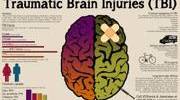A new comprehensive analysis of recent studies on the subject issues a clear warning that youngsters are likely to suffer the brunt of the worsening health effects of rising global temperatures due to record levels of obesity and physical inactivity.
Dr. Shawnda Morrison, an environmental exercise physiologist, believes that although physical fitness is essential for withstanding greater temperatures, children are more obese and less fit than ever before in a study she published in the peer-reviewed journal Temperature.
They may be more susceptible to developing heat-related illnesses such dehydration, heat cramps, heat exhaustion, or heat stroke as a result.
She claims that in order for children to adapt to living in a hotter world, existing climate change plans must prioritize encouraging children to make exercise a regular part of their daily life.
From Slovenia’s University of Ljubljana, Faculty of Sport, Dr. Morrison is an expert in adaptive and integrative human physiology in extreme environments. She has more than 20 years of expertise researching exercise physiology and sport performance, particularly in warm climates.
Her conclusions are based on a thorough analysis of more than 150 medical and scientific studies about how kids stay active, exercise, and deal with heat, as well as how these things may alter as the world’s temperatures rise.
The research she highlights includes a study of 457 primary school boys aged 5 to 12 in Thailand, which discovered that obese children were more than twice as likely to experience trouble controlling their body temperature when exercising outside as those of normal weight.
In a different study, emergency room data from children’s hospitals in the US revealed that attendance was higher on hotter days. Emergency care was more likely to be required for younger children.
Do what you love to do, whether it’s a family bike ride or rollerblade, a stroll through the woods or walking the dog. Make sure the activity raises everyone’s heart rate, enthusiasm, and positive energy and importantly, try not to completely avoid the heat but choose times of the day that are less hot (mornings/evenings) to keep active, since we need to keep ourselves moving in this new warming world.
Dr. Shawnda Morrison
The research has also found:
- Children’s aerobic fitness is 30% lower than that of their parents at the same age.
- There are rapid declines in child physically activity globally, especially over the last 30 years
- The majority of kids fall short of the World Health Organization’s recommendation to engage in at least 60 minutes of physical activity each day on average.
- When schools and other societal infrastructures were shut down because to the Covid-19 pandemic, physical inactivity increased, particularly in Europe.
“Rising temperatures could restrict physical activity further when parents of children perceive outdoor temperatures to be ‘too hot to play’, making it more uncomfortable for untrained or unfit children to meet the minimum physical activity levels to stay healthy,” says Dr. Morrison, who is also the Founder of Active Healthy Kids Slovenia.
New diseases are predicted to spread among humans as a result of rising temperatures and altered weather patterns. More movement limitations may have detrimental effects on children’s physical development, mental health, and overall health if they are implemented to prevent the spread of new diseases.
Dr. Morrison also points out that, in terms of thermoregulation how the body maintains its internal, or core, temperature young children are not simply smaller adults. Children don’t perspire as much as adults do in hot weather; instead, they lose heat by boosting blood flow to their skin, which can make the heart work somewhat harder.
Despite these variations, the majority of studies on how the body adjusts to greater temperatures have been conducted on adults. Most of the little mechanistic study that has been done on kids was done 15–30 years ago, when kids were far more physically fit than they are now.
Dr. Morrison concludes: “Fitter adults are better able to tolerate higher temperatures, due to a combination of physiological, behavioural and psychological factors.”
“Yet, as the world warms, children are the least fit they have ever been. It is imperative that children are encouraged to do daily physical activity to build up, and maintain, their fitness, so that they enjoy moving their bodies and it doesn’t feel like ‘work’ or ‘a chore’ to them.”
Activities can include both organized activities with rules, like football, basketball, and baseball, and active play with friends and family, ideally outside.
The greatest and most economical way to improve fitness levels and prepare kids to exercise throughout their lives is through physical education (PE) sessions provided by PE teachers. Particularly if schools don’t offer much physical education, families have a part to play.
Dr. Morrison says: “Do what you love to do, whether it’s a family bike ride or rollerblade, a stroll through the woods or walking the dog. Make sure the activity raises everyone’s heart rate, enthusiasm, and positive energy and importantly, try not to completely avoid the heat but choose times of the day that are less hot (mornings/evenings) to keep active, since we need to keep ourselves moving in this new warming world.”
In her ongoing research, Dr. Morrison is interested in learning how physically active kids and adults are during heat waves, as well as how hot, unpleasant, or thirsty they feel while engaging in these activities.
















